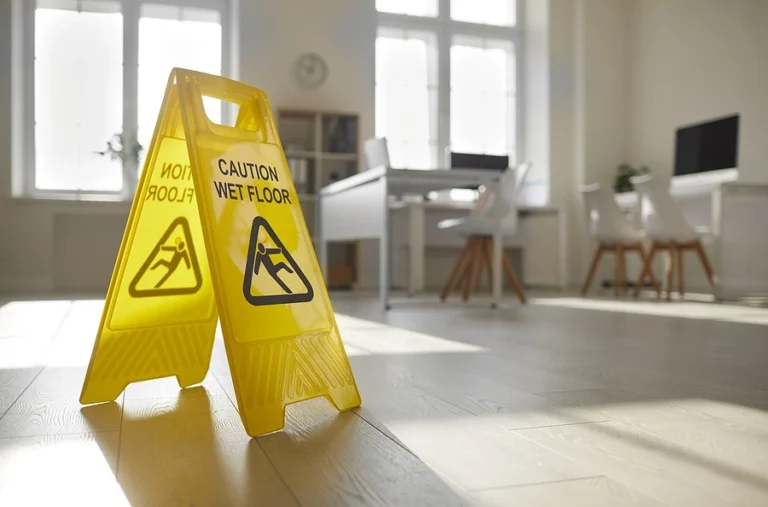Understanding Comparative Negligence in Slip and Fall Cases in West Palm Beach

Slip and fall accidents are a common source of injuries in West Palm Beach. Wet floors, uneven sidewalks, loose carpeting, and poorly maintained properties can all lead to serious harm. If you are injured in a slip and fall, understanding the concept of comparative negligence is crucial for protecting your rights and pursuing fair compensation.
What Comparative Negligence Means
Comparative negligence is a legal principle used in Florida to determine how fault is shared when more than one party is responsible for an accident. In slip and fall cases, this means that the property owner may not be solely responsible for your injuries if your actions contributed in some way.
Florida follows a system called pure comparative negligence. This allows injured parties to recover compensation even if they are partially at fault. However, any damages awarded will be reduced based on the percentage of fault attributed to you. For example, if a jury determines you were 20% responsible for a fall, your compensation would be reduced by that amount.
How Comparative Negligence Applies in Slip and Fall Cases
Slip and fall accidents can involve complex circumstances. Property owners have a duty to maintain their premises in a reasonably safe condition, but individuals also have a responsibility to act carefully. Comparative negligence comes into play when both parties may have contributed to the accident.
Common scenarios include:
-
Walking while distracted and not noticing a wet floor.
-
Failing to use available handrails on stairs.
-
Ignoring visible warning signs about hazards.
-
Wearing inappropriate footwear that increases the risk of slipping.
In these cases, the property owner may still be liable, but your compensation could be adjusted to reflect your share of fault.
Determining Fault in Slip and Fall Accidents
Establishing fault in a slip and fall case involves examining multiple factors, including:
-
Property Conditions: Was the hazard obvious or concealed? How long had it existed?
-
Property Owner Responsibility: Did the owner know or should they have known about the dangerous condition?
-
Your Actions: Were you behaving reasonably, paying attention, and following posted warnings?
-
Witness Accounts: Testimony from others present can clarify the circumstances of the fall.
Accurately determining fault requires careful documentation and often professional evaluation. Photographs, videos, maintenance records, and witness statements are critical pieces of evidence.
Impact on Compensation
Comparative negligence directly affects the amount of compensation you can recover. Florida law allows for recovery even if you are partially responsible, but damages are reduced in proportion to your fault.
For example, if a slip and fall results in $50,000 in damages but you are found 25% at fault, your award would be reduced to $37,500. Understanding this adjustment is important when evaluating settlement offers or deciding whether to pursue litigation.
Proving Negligence in Slip and Fall Cases
To succeed in a slip and fall claim, you generally must prove:
-
Duty of Care: The property owner had a legal obligation to maintain a safe environment.
-
Breach of Duty: The owner failed to uphold that duty by allowing a hazard to exist.
-
Causation: The breach directly caused your injuries.
-
Damages: You suffered measurable harm, such as medical bills, lost wages, or pain and suffering.
Comparative negligence may reduce your recovery, but it does not eliminate the property owner’s obligation if they were negligent.
Common Defenses by Property Owners
Property owners often raise comparative negligence as a defense. They may argue that:
-
You were not paying attention or were distracted.
-
You ignored warning signs or barriers.
-
Your footwear or behavior contributed to the accident.
-
The hazard was open and obvious, reducing their liability.
These defenses are used to argue that your actions played a role, which could lower the amount of damages awarded.
Why Legal Guidance Is Important
Navigating comparative negligence in slip and fall cases can be complex. A personal injury lawyer in West Palm Beach can:
-
Investigate the accident thoroughly to determine liability.
-
Collect evidence and witness testimony that supports your claim.
-
Accurately assess your potential damages and how fault might affect them.
-
Negotiate with insurance companies to maximize compensation.
-
Represent you in court if a settlement cannot be reached.
Professional guidance ensures that your case is handled correctly and that you receive fair treatment despite partial fault.
Steps to Protect Your Rights After a Slip and Fall
If you experience a slip and fall accident, there are practical steps to take immediately:
-
Seek Medical Attention: Ensure all injuries are documented by a medical professional.
-
Report the Accident: Notify property management or the owner and request an official report.
-
Document the Scene: Take photos and videos of the hazard, surrounding area, and any contributing conditions.
-
Collect Witness Information: Obtain names and contact details of anyone who saw the accident.
-
Preserve Evidence: Keep clothing, shoes, or other items involved in the fall.
-
Consult a Lawyer: Early legal advice can protect your rights and improve the chances of fair compensation.
Following these steps helps build a strong case, even if comparative negligence may be applied.
Conclusion
Comparative negligence plays a significant role in slip and fall cases in West Palm Beach. It recognizes that multiple parties can contribute to an accident, and it adjusts compensation accordingly. Understanding this principle helps injured individuals make informed decisions and take the right steps to protect their legal rights.
Documenting the accident, reporting it properly, seeking medical attention, and consulting a personal injury lawyer are critical actions to ensure that you are not unfairly penalized for partial fault. With careful preparation and professional guidance, you can pursue the compensation you deserve while navigating the complexities of comparative negligence in slip and fall claims.

 Call Us Today - It's Free
Call Us Today - It's Free